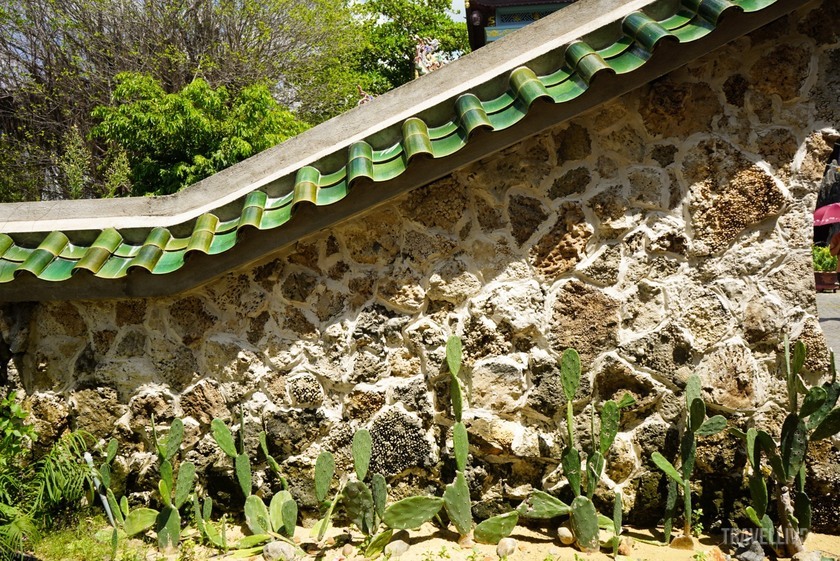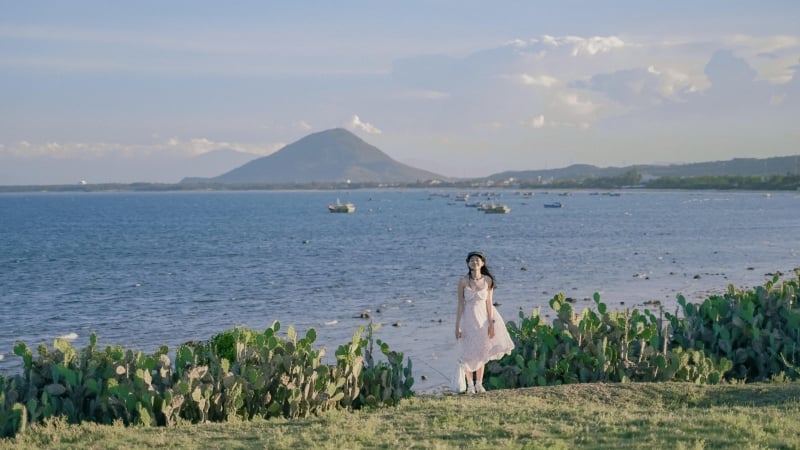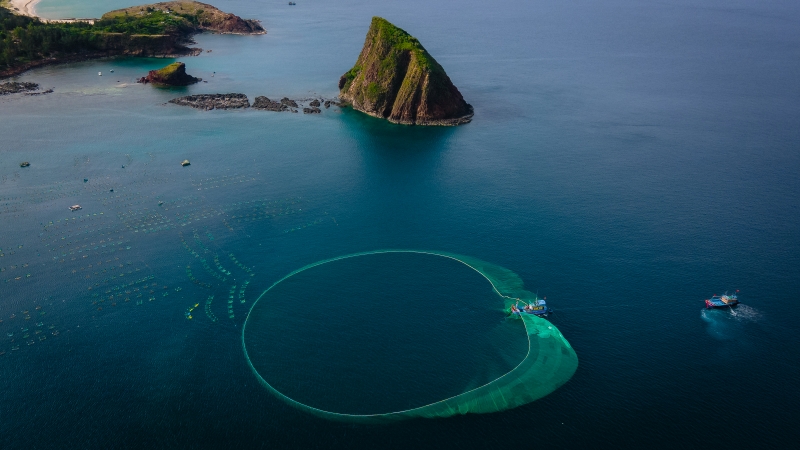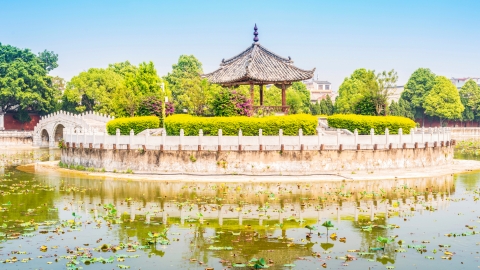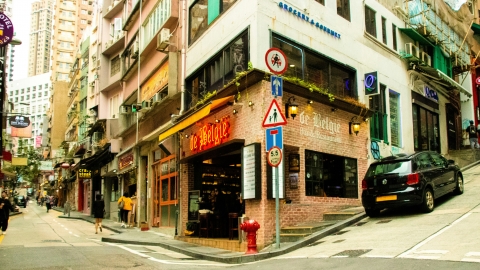Nestled on the deep blue sea, Thanh Luong Pagoda located in An Chan Commune, Tuy An District, Phu Yen Province, has become a special destination for tourists who love to explore unique culture and architecture. This is not only a sacred place for local people to seek spiritual refuge, but also a wonderful work of art, a harmonious combination of nature and human creativity.
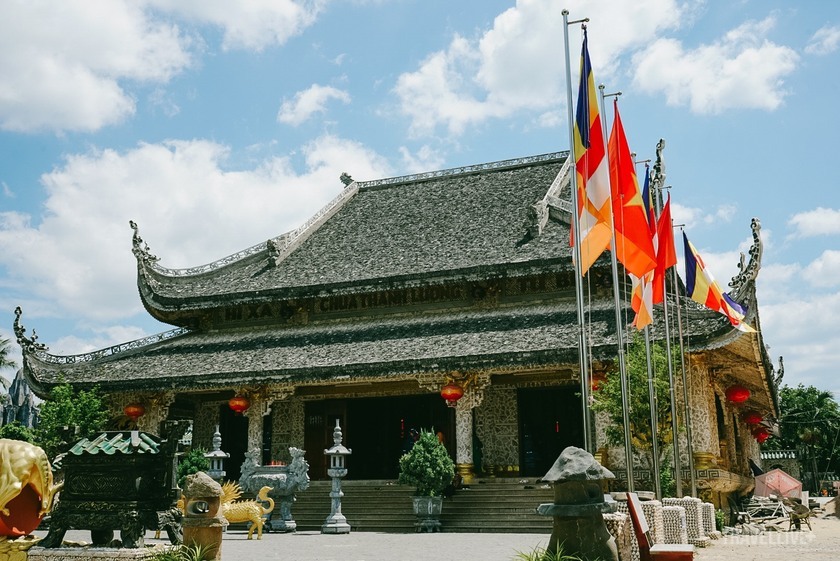
This place has long been a special destination for tourists who love to explore unique culture and architecture.
Ancient temple associated with thrilling legends
Legend has it that, at the end of the 18th century, a group of Chinese merchants accidentally discovered a peaceful land in Phu Yen. They decided to build Thanh Luong Pagoda as a place to express their nostalgia for their homeland and pray for peace. However, after many years, the Chinese community no longer existed, and the pagoda gradually became deserted.
It was not until My Quang fishing village became more and more crowded that people discovered this ancient pagoda. Together they restored and embellished it, turning it into an important spiritual pilgrimage site.
Another thrilling story associated with Thanh Luong Pagoda is about the statue of Quan The Am. According to legend, this statue was washed ashore near Hon Dua beach by the waves. Despite the passage of time, the statue still retains its solemn and sacred appearance. People believe that this is a good omen and organized a solemn procession to bring the statue back to the pagoda. Since then, this pagoda has received more attention.
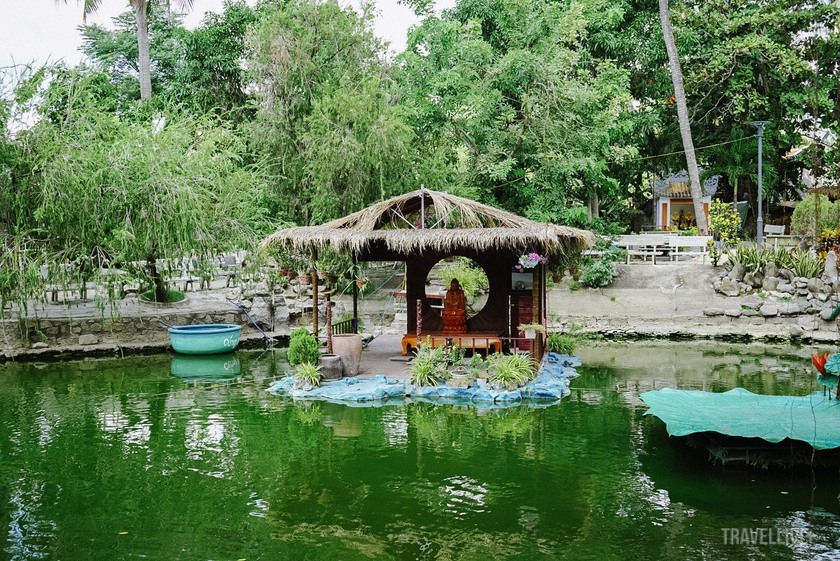
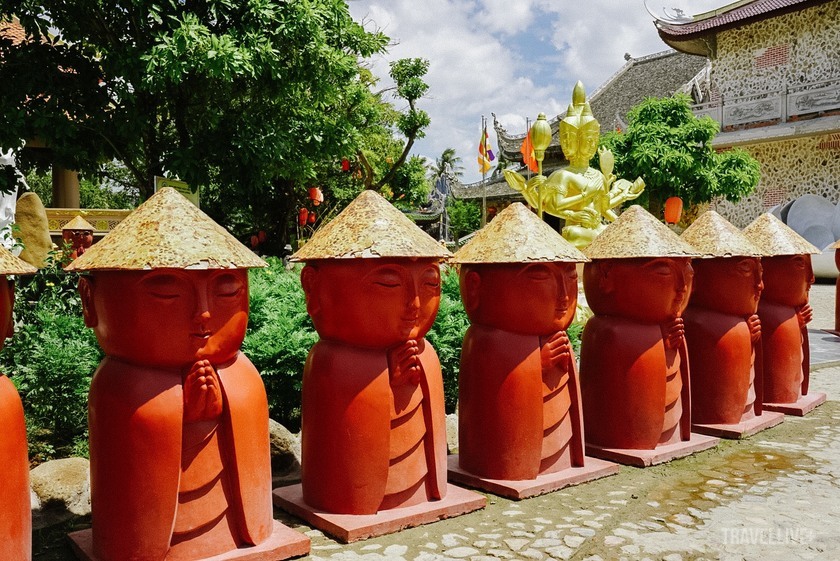

A serene space leads to the temple.
Thanh Luong Pagoda was originally a small, simple pagoda, with the function of being a place of worship for the fishermen in the area. Over time, the pagoda has undergone many restorations and expansions. What is special here is the combination of Buddhist beliefs and ancestor worship of the people of Xu Nau, creating a sacred, close and humane space.
In the early 21st century, Thanh Luong Pagoda underwent a major restoration using unique natural materials. This was also the time when the pagoda became famous for its architecture made from coconut shells and coral, attracting not only locals but also tourists from all over to visit.
Unique architecture: Coconut shells and corals blend with nature
Thanh Luong Pagoda is divided into four main parts: Tam Quan Gate, Long Thuy Lake, Quan Am Temple and Meditation Hall. From afar, the pagoda stands out with its architecture bearing the strong imprint of coastal culture, thanks to the delicate combination of sea coral and coconut shell materials. Coral - a symbol of underwater creatures and coconut shell - symbolizes the purity and nobility of Buddhism, creating a unique feature for the pagoda.
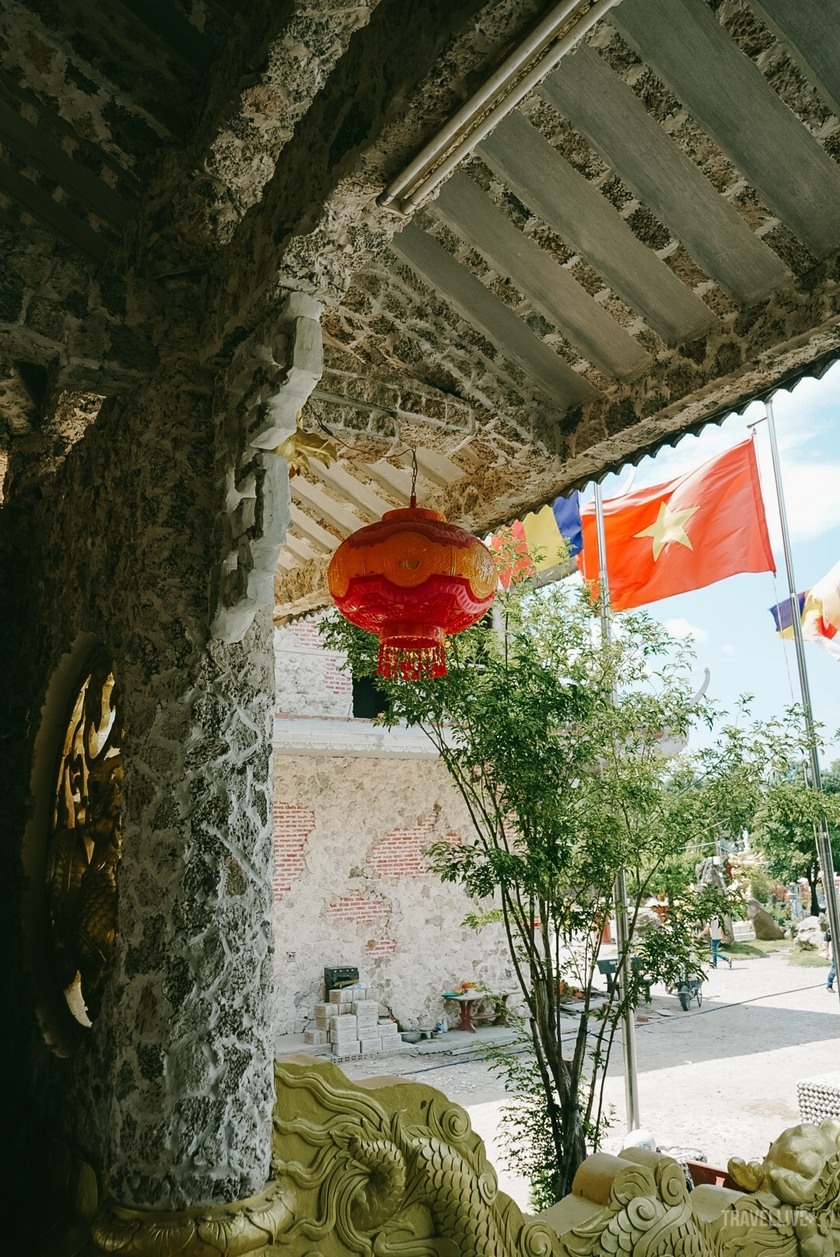

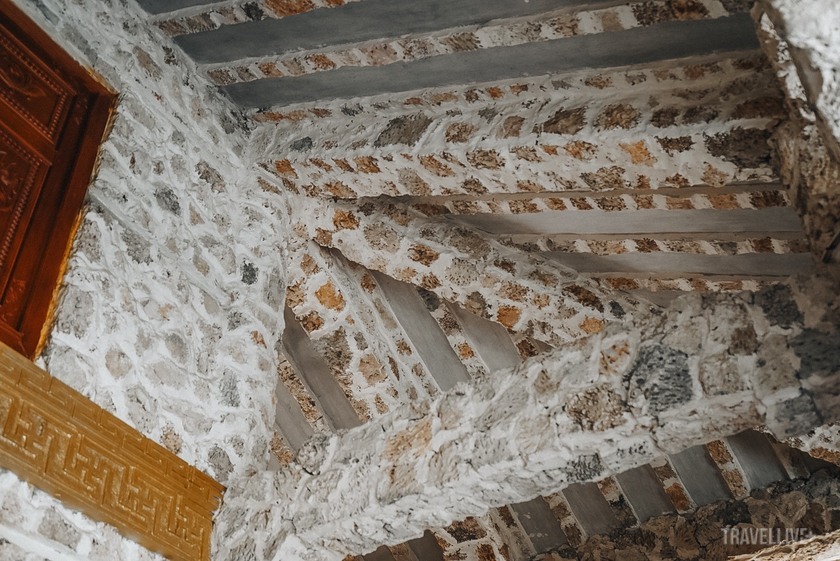
The architecture bears the mark of coastal culture, thanks to the subtle combination of sea coral and coconut shell materials.
According to the locals, the construction process of Thanh Luong Pagoda was also very elaborate. Coral blocks were taken from the sea, through many steps of carving and polishing, and used to decorate unique details such as dragon heads, geometric shapes, ceilings...
The temple roof is meticulously designed to create a natural, soft curve. Instead of being made of wood, the temple walls are covered with coral and coconut shells. The brown, black, and white colors of the coconut shells blend together, creating a unique, distinctive beauty that few temples in Vietnam have. This is also the reason why any tourist coming to Phu Yen wants to visit Thanh Luong Pagoda to admire with their own eyes the beauty of the walls and roofs made from coral and coconut shells. Today, Thanh Luong Pagoda is considered the first pagoda to use coral and coconut shells to cover the roof of the Ancestral Temple.
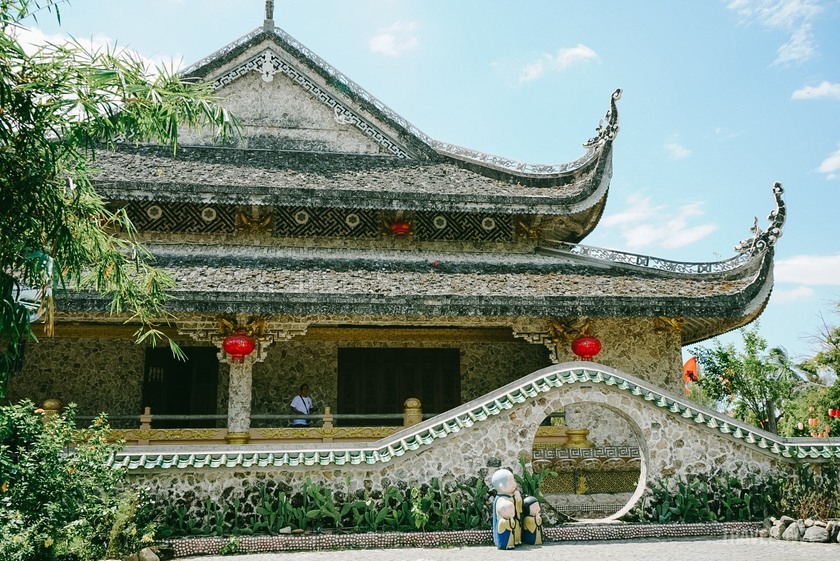
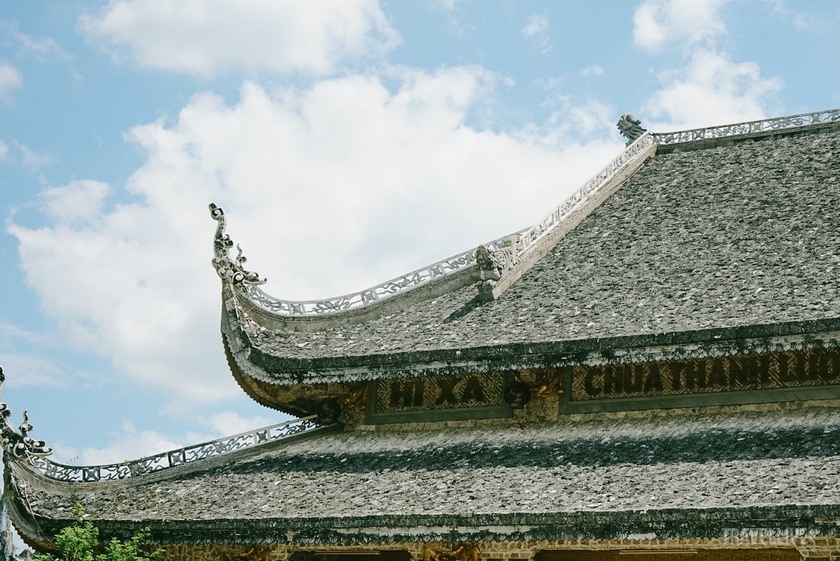
The temple roof is meticulously designed to create a soft, natural curve.
When entering Thanh Luong Pagoda, we will immediately feel the peace and tranquility in our souls. The temple landscape is simply decorated but no less solemn. Although not as splendid as other temples, Thanh Luong Pagoda still attracts visitors by its unique architecture and the gentle character of the people here.

Quan Am Temple - where the mysterious legend of the temple is kept.
Right at the temple gate, visitors will be welcomed by a serene and peaceful Maitreya Buddha statue. To the left of the temple is a lotus pond, in full bloom, the vibrant color of the lotus reflects on the clear water, creating a quiet and poetic scene. Another highlight is the clear lake with a statue of Buddha smiling kindly, the Buddha's hand rising above the water, creating a sacred and meditative space. This Buddha statue is about 7 meters high, inaugurated in September 2019.
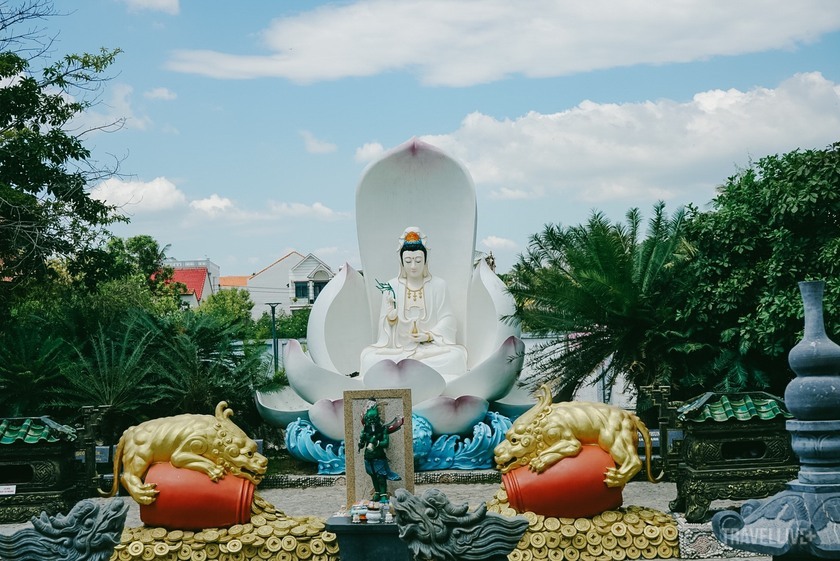
Space opposite the main hall of the temple.

Next to Quan Am Temple is a very impressive rockery.
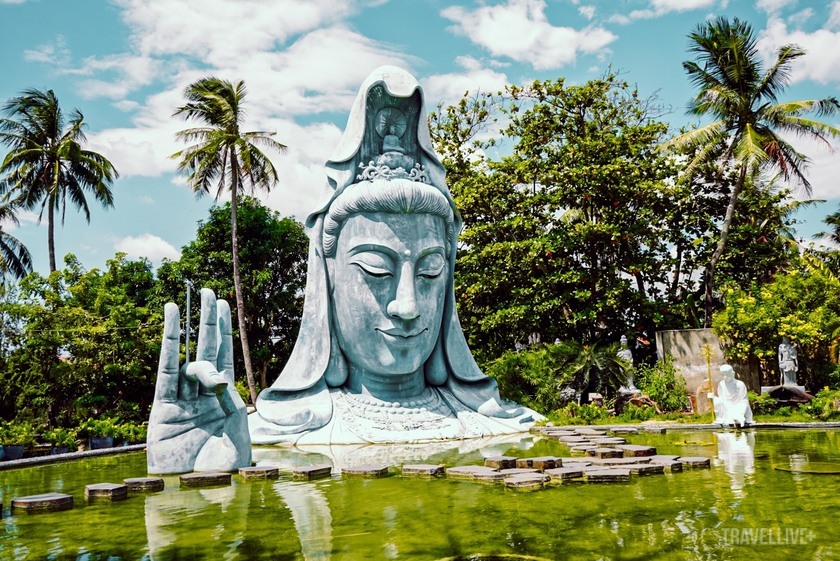
This Buddha statue is about 7 meters high, protruding above the water.
Minh Ngoc (29 years old, a tourist from Ho Chi Minh City) shared: "The temple is large, beautiful and ancient, very worth visiting when coming to Phu Yen. I especially like the lake space with the Buddha statue, the feeling of peace is indescribable."
In addition, Thanh Luong Pagoda is also located near many other famous places in Phu Yen such as Ganh Da Dia, Bai Xep, or O Loan lagoon. After visiting the pagoda, tourists can combine exploring these destinations to have a more complete trip.
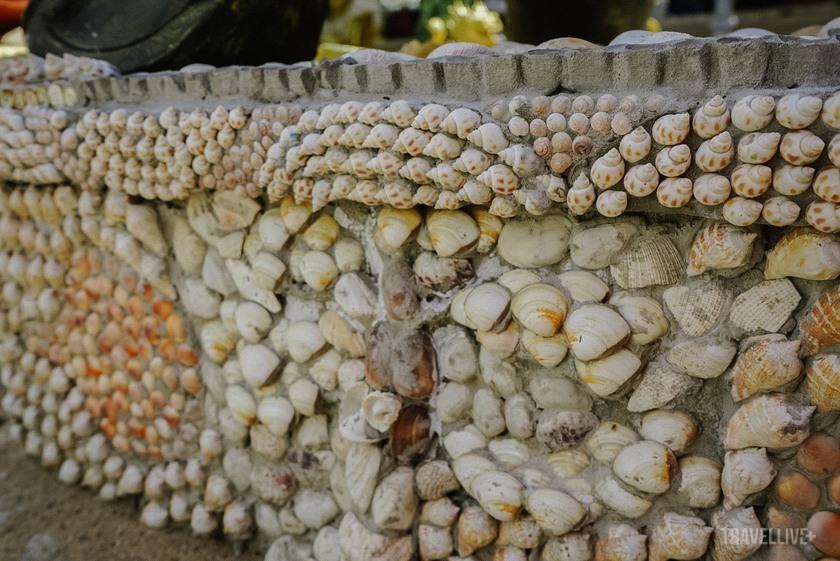

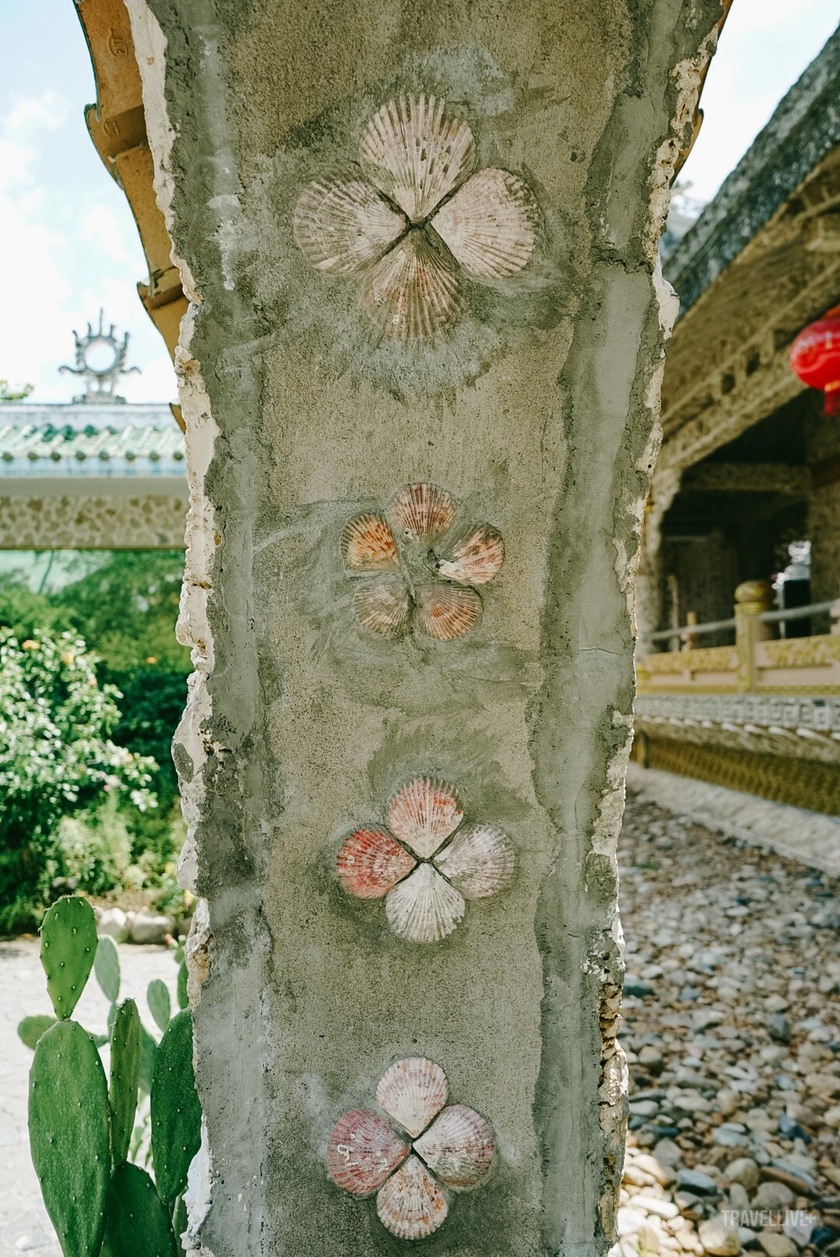
Walking around, visitors can easily see decorative images made of shells and corals throughout the temple.
